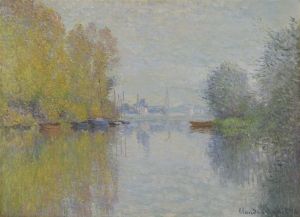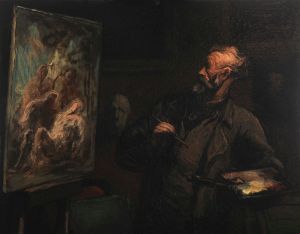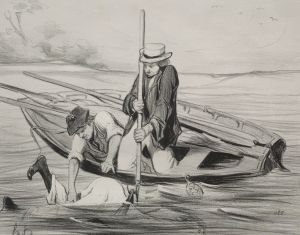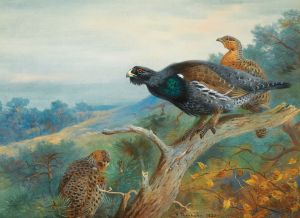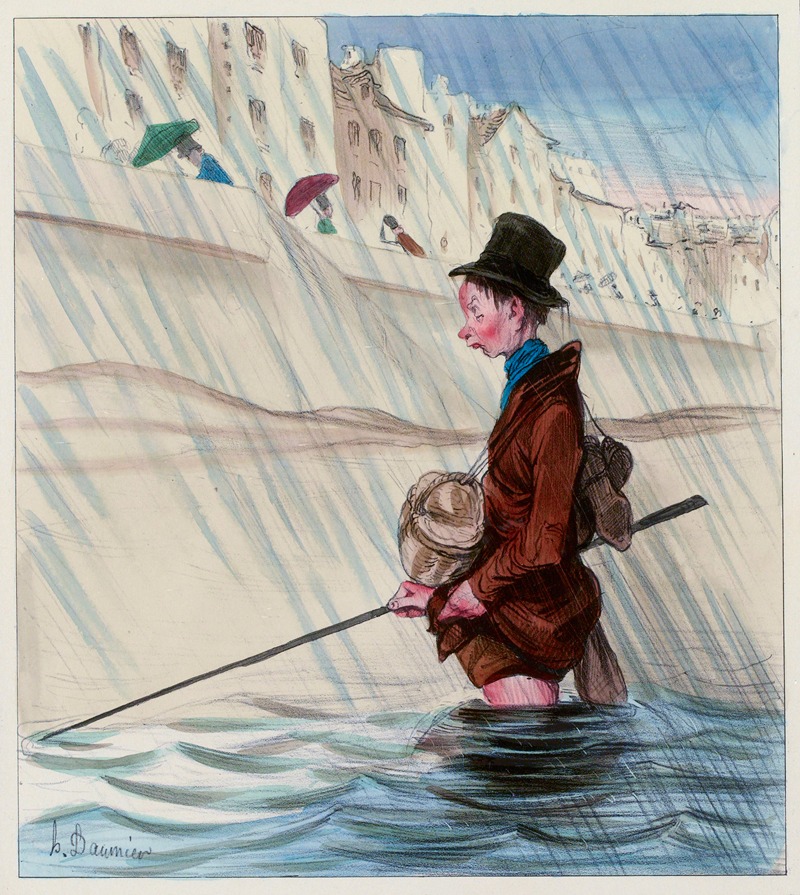
Cours d’histoire naturelle 02 Le martin-pêcheur
A hand-painted replica of Honoré Daumier’s masterpiece Cours d’histoire naturelle 02 Le martin-pêcheur, meticulously crafted by professional artists to capture the true essence of the original. Each piece is created with museum-quality canvas and rare mineral pigments, carefully painted by experienced artists with delicate brushstrokes and rich, layered colors to perfectly recreate the texture of the original artwork. Unlike machine-printed reproductions, this hand-painted version brings the painting to life, infused with the artist’s emotions and skill in every stroke. Whether for personal collection or home decoration, it instantly elevates the artistic atmosphere of any space.
Honoré Daumier was a prominent French artist, known for his prolific work as a painter, caricaturist, and sculptor. He was born on February 26, 1808, in Marseille, France, and became one of the most influential figures in 19th-century French art. Daumier is particularly celebrated for his satirical caricatures that critiqued social and political life in France during his time.
One of Daumier's works is "Cours d’histoire naturelle 02 Le martin-pêcheur," which translates to "Natural History Lessons 02 The Kingfisher." This piece is part of a series that humorously depicts animals in anthropomorphic situations, often reflecting human characteristics or societal roles. Daumier's work in this series is characterized by its wit and keen observation of both animal behavior and human society.
The "Cours d’histoire naturelle" series was created during a period when Daumier was actively contributing to various publications, using his art to comment on the political and social issues of the day. His work often appeared in journals such as "Le Charivari," where he used lithography to produce his images. Lithography, a printing process that allows for the mass production of images, was a medium Daumier mastered, enabling him to reach a wide audience with his satirical messages.
In "Le martin-pêcheur," Daumier employs his characteristic style, which combines realism with exaggeration to highlight the absurdities of human nature. The kingfisher, known for its vibrant plumage and skillful hunting abilities, is depicted in a manner that likely reflects a humorous take on human traits or societal norms. While specific details about this particular piece are limited, it fits within Daumier's broader oeuvre, which often used animals as a vehicle for satire.
Daumier's work is notable for its ability to transcend the specific political context of 19th-century France, offering timeless insights into human behavior and societal structures. His keen eye for detail and ability to capture the essence of his subjects made his art both popular and influential. Despite facing censorship and political pressure, Daumier continued to produce work that challenged the status quo and provided commentary on the human condition.
Throughout his career, Daumier remained committed to his artistic vision, producing thousands of drawings, paintings, and sculptures. His work has been celebrated for its technical skill, innovative use of media, and profound impact on both contemporary and future generations of artists. Today, Daumier is remembered as a master of satire and a pivotal figure in the history of art, with his works continuing to be studied and appreciated for their artistic and historical significance.









